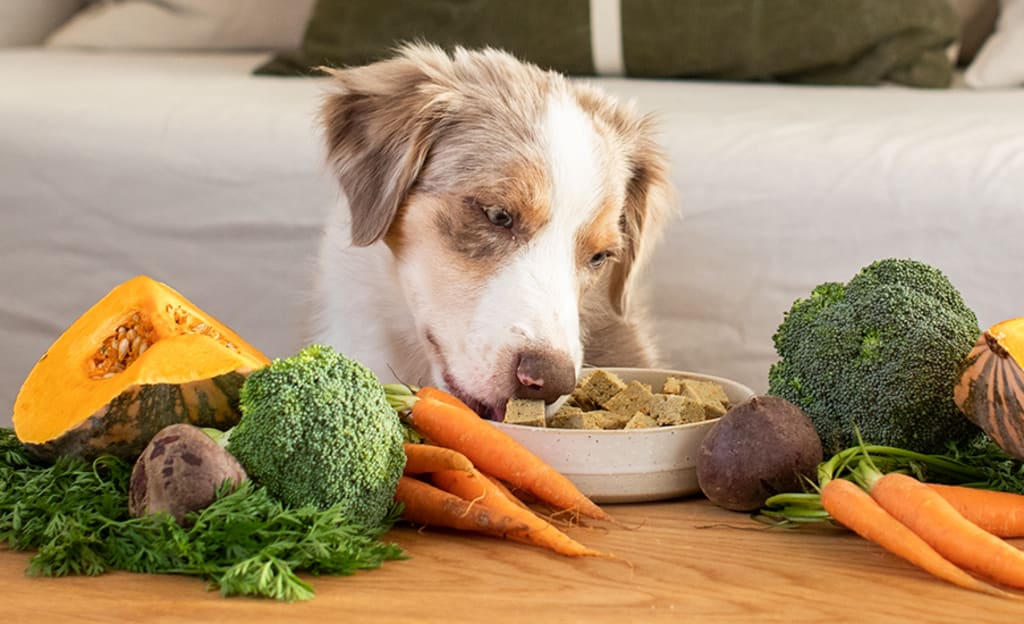Ingredients To Look For And Avoid In Dog Food
Best And Harmful Foods for Dogs

Choosing the right food for your furry friend can be a daunting task. With so many brands and types of dog food available, it can be difficult to know what to look for and what to avoid. The quality of ingredients used in your dog’s food can impact their overall health and well-being. In this article, we will explore the top ingredients to look for and harmful ingredients to avoid in dog food, how to read dog food labels, natural and organic dog food options, common misconceptions about dog food ingredients, and why consulting with a veterinarian is essential when selecting the best dog food for your pet.
1. Understanding the importance of dog food ingredients
Why dog food ingredients matter
Just like humans, dogs need a balanced and nutritious diet to be healthy and happy. The ingredients in your dog’s food can have a huge impact on their overall well-being, from their energy levels and digestion to their coat and skin health.
Different types of dog food ingredients
Dog food ingredients can be categorized into several groups, including protein sources, carbohydrates, fats, vitamins, and minerals. High-quality dog food should include a variety of these ingredients to provide your furry friend with all the nutrients they need.

2. Top ingredients to look for in dog food
High-quality sources of protein
Protein is essential for building and repairing your dog’s muscles, and it should be the main ingredient in their food. Look for dog food that uses high-quality sources of protein, such as chicken, turkey, beef, lamb, and fish.
Whole grains and vegetables
Carbohydrates are an important source of energy for dogs, but not all carbohydrates are created equal. Whole grains and vegetables provide healthy fiber and nutrients, while also helping to regulate your dog’s blood sugar levels. Look for dog food that includes whole grains like brown rice, barley, and oats, as well as a variety of veggies like sweet potatoes, peas, and carrots.
Healthy fats and oils
While fats have gotten a bad reputation in the past, they are actually an important part of a balanced dog diet. Healthy fats like omega-3 and omega-6 fatty acids can support brain and eye development, improve skin and coat health, and provide energy. Look for dog food that contains sources of healthy fats like fish oil, flaxseed, and chicken fat.

3. Harmful ingredients to avoid in dog food
Artificial preservatives and colors
Artificial preservatives and colors are often added to dog food to increase its shelf life and make it look more appealing. However, many of these additives have been linked to health problems like cancer and allergies. Look for dog food that uses natural preservatives like vitamin E and avoids artificial colors altogether.
Unhealthy fillers and by-products
Fillers like corn, wheat, and soy are often added to dog food to make it more affordable, but they provide very little nutritional value. By-products like chicken meal and beef by-product meal may also be used, but they can contain low-quality parts of the animal like beaks and feet. Look for dog food that uses high-quality ingredients and avoids fillers and by-products.
Chemical additives and sweeteners
Chemical additives like propylene glycol and carrageenan are often added to dog food to improve its texture or flavor, but they can be harmful to your dog’s health. Sweeteners like corn syrup and fructose can also be added, but they can lead to weight gain and other health issues. Look for dog food that uses natural ingredients and avoids chemical additives and sweeteners.
4. How to read dog food labels
Understanding the ingredients list
The ingredients list on your dog’s food bag can be confusing, but it’s important to understand what you’re feeding your furry friend. Start by looking for the first few ingredients, which should be high-quality sources of protein. Avoid foods with fillers like corn and soy, as well as artificial preservatives and sweeteners.
Interpreting the guaranteed analysis section
The guaranteed analysis section on your dog’s food bag provides important information about the nutrients in the food. Look for dog food with a protein content of at least 18%, and a fat content between 5-8%. Check the list of vitamins and minerals to ensure your dog is getting a balanced diet.
By paying attention to the ingredients in your dog’s food, you can help ensure they are getting the nutrition they need to thrive. Look for high-quality sources of protein, whole grains and vegetables, and healthy fats and oils, while avoiding harmful additives and fillers. By reading and understanding dog food labels, you can make informed choices about what to feed your furry friend.5. Natural and organic dog food options
Many pet owners are turning to natural and organic dog food as a healthier alternative to traditional commercial dog food. These options typically contain high-quality ingredients, such as real meat, vegetables, and fruits, and avoid artificial preservatives, colors, and flavors.
Advantages of natural and organic dog food
One of the main advantages of natural and organic dog food is that it is often easier for dogs to digest. Since it contains real and wholesome ingredients, it can help improve your dog’s overall health and wellbeing. Additionally, natural and organic dog food options are often free from harmful preservatives and chemicals that can be found in traditional commercial dog food, which may harm your pet’s health in the long run.
How to find natural and organic dog food options
5. isconceptions about dog food ingredients
There are several misconceptions surrounding dog food ingredients that have circulated over the years. It’s important to distinguish facts from myths to ensure that your dog receives the best nutrition possible.
Myth: Dogs need a lot of grains in their diet
While it is true that dogs can digest grains, they do not require them in large amounts. In fact, many dogs are allergic to certain grains, such as wheat and corn. Look for dog food options that contain a balance of protein, healthy fats, and carbohydrates, instead of relying solely on grains as a source of energy.
Myth: By-products are unhealthy for dogs to eat
Some pet owners avoid dog food options that contain by-products such as liver, kidneys, and hearts, assuming that they are low-quality ingredients. However, by-products are actually rich in protein and valuable nutrients that are beneficial for dogs. As long as by-products are sourced from high-quality, reputable sources, they can be a healthy addition to your dog’s diet.
6. Importance of consulting with a veterinarian when selecting dog food
Choosing the right dog food can be a daunting task for pet owners, especially when considering factors such as your dog’s age, breed, and health conditions. Consulting with a veterinarian can help you make an informed decision and ensure that your dog receives a well-balanced diet.
How a veterinarian can help you choose the right dog food
A veterinarian can guide you in selecting dog food options that are tailored to your dog’s specific nutritional needs. They can also advise you on the appropriate portion sizes and feed frequency for your pet.
Special considerations for dogs with dietary restrictions
If your dog has special dietary restrictions, such as allergies or medical conditions, your veterinarian can recommend appropriate dog food options that cater to their needs. They may also suggest supplements or additional sources of nutrients to ensure that your dog’s diet is well-rounded.In conclusion, choosing the right ingredients for your dog’s diet is essential for their health and happiness. By being aware of what to look for and avoid in dog food, reading labels carefully, and consulting with a veterinarian, you can make an informed decision and provide your furry friend with the best possible nutrition. With the right food, your dog can live a long and healthy life by your side.
FAQ
What are some of the most harmful ingredients to avoid in dog food?
Some of the most harmful ingredients to avoid in dog food include artificial preservatives and colors, unhealthy fillers and by-products, and chemical additives and sweeteners.
Are natural and organic dog foods always the best option for dogs?
While natural and organic dog foods can be a great option for many dogs, they are not always the best choice. It is essential to carefully read labels and consult with a veterinarian to ensure that the food meets your dog’s individual needs.
Do dogs need grains in their diet?
While some grains can be a healthy addition to a dog’s diet, they are not necessary for all dogs. Each dog’s nutritional requirements are unique, so it is important to consult with a veterinarian to determine the best diet for your pet.
Can certain ingredients in dog food cause allergies?
Yes, certain ingredients in dog food can cause allergies, such as corn, wheat, and soy. It is essential to monitor your dog’s reaction to new foods and consult with a veterinarian if you suspect that your dog has a food allergy.
About the Creator
Enjoyed the story? Support the Creator.
Subscribe for free to receive all their stories in your feed. You could also pledge your support or give them a one-off tip, letting them know you appreciate their work.





Comments
There are no comments for this story
Be the first to respond and start the conversation.